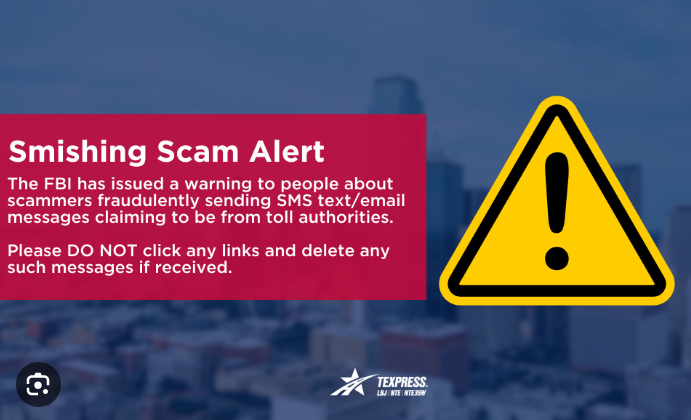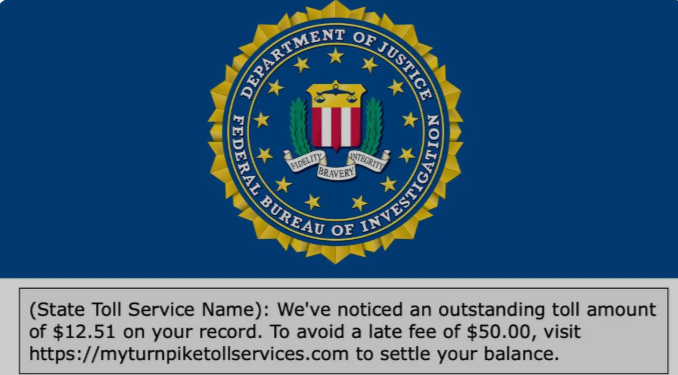The Federal Bureau of Investigation (FBI) has issued a high-priority alert regarding a sharp rise in smishing texts, warning citizens about the dangers of these deceptive messages that aim to steal personal information. Cybercriminals are now using increasingly sophisticated tactics to exploit unsuspecting users, making it critical to stay informed and vigilant.

What Are Smishing Texts?
Smishing, short for “SMS phishing,” is a type of cyberattack where scammers send fraudulent text messages designed to trick recipients into divulging sensitive information such as passwords, financial details, or personal identification numbers (PINs). These messages often appear to be from trusted sources like banks, delivery companies, or even government agencies.
With the FBI’s latest warning on smishing texts, it’s clear that cybercriminals are refining their techniques, making their scams harder to detect. Understanding how these scams work and how to spot them is essential to protecting your data and financial security.
Why the FBI Is Sounding the Alarm
According to recent cybersecurity reports, the number of smishing attacks has surged by over 300% in the past year. The FBI has warned that these attacks are particularly effective because they leverage social engineering techniques, exploiting human psychology to deceive victims into clicking on malicious links or sharing private information.
Key Reasons Behind the Spike in Smishing Attacks:
- Advanced Spoofing Techniques: Attackers can now make their texts appear as if they are coming from legitimate sources, such as your bank or a government agency.
- AI-Powered Scams: Scammers are using artificial intelligence to craft convincing messages that sound professional and trustworthy.
- Widespread Data Breaches: With personal information available on the dark web, fraudsters can tailor messages that seem highly personalized, increasing their success rate.
How Smishing Texts Work: The Anatomy of a Scam
- The Initial Message – You receive a text claiming to be from a trusted entity, often urging immediate action.
- The Urgency Factor – The message creates a sense of urgency, such as “Your account has been compromised! Click this link to secure it.”
- The Malicious Link or Number – If you click, you may be redirected to a fake website that looks identical to the legitimate one, asking you to enter your login credentials or personal data.
- Data Theft & Exploitation – Once you enter your information, hackers gain access to your accounts and can use them for fraudulent activities.
Red Flags: How to Identify a Smishing Text
To avoid falling victim to these scams, always watch for these warning signs: ✅ Unknown Sender: If the message comes from an unfamiliar number, be cautious. ✅ Grammar & Spelling Errors: Legitimate organizations rarely send texts with typos or awkward phrasing. ✅ Unusual Links: Hover over any links before clicking. If the URL looks suspicious, do not proceed. ✅ Requests for Personal Information: Banks and government agencies will never ask for sensitive details via text. ✅ Urgent or Threatening Language: Messages that pressure you to act quickly are often scams.

Real-Life Examples of Smishing Attacks
✔ Bank Scams – Victims receive texts claiming their bank account is at risk, urging them to confirm their details via a malicious link. ✔ Delivery Scams – Fake messages from “FedEx” or “UPS” request additional shipping fees or information to release a package. ✔ Government Impersonation – Fraudsters pose as the IRS or FBI, claiming tax issues or legal threats.
How to Protect Yourself from Smishing Texts
🔹 Never Click on Suspicious Links – If you receive a text from an unknown number, avoid clicking on any embedded links. 🔹 Verify Directly with the Source – If a bank or government agency supposedly sent the message, contact them directly via official channels. 🔹 Block & Report Scammers – Most mobile devices allow you to block and report spam messages. 🔹 Enable Two-Factor Authentication (2FA) – Adding an extra layer of security to your accounts can prevent unauthorized access. 🔹 Use Spam Filters – Many carriers offer free anti-spam services to filter out potential scam messages. 🔹 Stay Informed – Regularly check cybersecurity alerts from official sources like the FBI warning on smishing texts.
What to Do If You Fall Victim to a Smishing Attack
If you suspect you have been targeted by a smishing text, take the following steps immediately:
- Do Not Respond – Avoid engaging with the sender in any way.
- Report the Scam – Forward the message to your mobile carrier (e.g., 7726 in the U.S.).
- Change Your Passwords – If you provided any login credentials, update them immediately.
- Monitor Your Accounts – Watch for any suspicious activity in your bank and credit accounts.
- Notify Authorities – Report the incident to the FBI’s Internet Crime Complaint Center (IC3) at www.ic3.gov.
FAQs About Smishing Texts
1. What should I do if I receive a smishing text? Avoid clicking on any links, do not respond, and report the message to your mobile carrier or the relevant authorities.
2. How can I tell if a text is legitimate or a scam? Look for red flags such as urgent language, requests for sensitive information, suspicious links, and grammatical errors.
3. Can smishing texts install malware on my phone? Yes, some smishing texts contain malicious links that, when clicked, can download malware onto your device.
4. What happens if I accidentally click on a smishing link? Immediately close the page, do not enter any information, and run a security scan on your device.
5. Are smishing attacks only done through text messages? No, similar tactics are used in phishing emails and voice scams (vishing). Always stay alert.

Final Thoughts: Stay One Step Ahead of Cybercriminals
The FBI warning on smishing texts serves as a stark reminder of the evolving threats in the digital landscape. Cybercriminals are getting smarter, but by staying vigilant and following best security practices, you can outsmart them. Protect yourself, educate those around you, and always think twice before clicking on a suspicious text message.
By spreading awareness and taking preventive measures, we can collectively reduce the success rate of these scams and keep our personal information secure.
Have you encountered smishing texts recently? Share your experience in the comments to help others stay informed!














